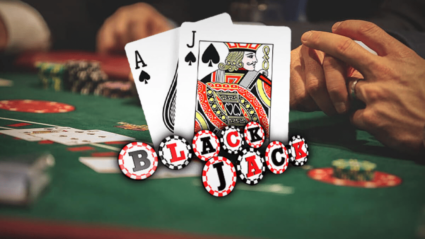 The math behind blackjack is both interesting and hard to understand at first glance. Let’s think about the casino game blackjack for a bit.
The math behind blackjack is both interesting and hard to understand at first glance. Let’s think about the casino game blackjack for a bit.
Just by looking at how nice a typical casino in Las Vegas or Monte Carlo is, you can tell that most people who gamble lose money. When a casino wins, there are good mathematical reasons for it. Even though there are a lot of books and websites that claim to teach you how to beat the odds in almost every casino game, many of them are, at best, wrong and, at worst, complete nonsense.
But when it comes to the card game blackjack, there are some solid bits of math that can help a player beat the casino. In blackjack, you can increase your bet when things are going well, which you can’t do in other casino games. You can also decide what to do based on what you learn as you play. Both of these can help you win at blackjack.
First, a quick lesson on blackjack: it’s played with one or more decks of 52 cards. Each card is worth either the number on it, 10 for face cards, or either 1 or 11 for an ace. The goal of the game is to get cards that add up to as close to 21 as possible without going over. Each player is given two cards and can choose to take more if they want to. The dealer, who works for the casino, also gets two cards. Based on a set of rules, the dealer must either stand (stop drawing cards) or draw (ask for more cards).
Increasing your bet when things are going well
In blackjack, which situations are good and which are not?
Imagine getting a hand that adds up to 16. If the dealer has a strong hand, like a face card showing, and you stand, you’ll probably lose. Drawing isn’t much better. You can’t go over 21 and lose right away unless you get a 2, 3, 4, or 5. Draw, and you’ll probably lose. You have a bad hand if you have a 16.
How about a hand with, say, eight cards? More than half of the cards you could get next are either aces or 10s, which are all good cards. A hand with a total of eight is good for you.
So let’s say you get two 8s. This hand is the worst, with a value of 16. But if you have two identical cards, like two 8s or two Jacks, most casinos will let you split them into two different hands. In order to do this, you must also double your bet. And making two separate eight-valued hands out of the two 8s…wow! You can turn a bad hand into two good ones, and you can also raise your bet.
The rules of blackjack let you raise your bet when things are going well.
In most casino games, like roulette, the odds of winning or losing are the same for every single bet. Not so in blackjack. If, for example, there are more 10-valued cards left to be dealt than small-valued cards, your chances of getting a winning hand are higher. By keeping track of how many high-value cards and low-value cards have been played, you can figure out how likely it is that you will win the next hand. This method, called “counting cards,” is much easier than you might think.
Counting can be as easy as keeping track of cards in three groups: those that help you, those that hurt you, and those that don’t make much difference in how likely it is that you will win or lose a hand.
Aces and 10s are good for you because they help you get to 21 (or close to it) quickly. The next hand is more likely to go your way if there are more aces and 10-valued cards left in the deck.
You don’t want to get low-value cards like 2, 3, 4, 5, and 6. Because there are so many 10-valued cards in the deck, if you are dealt a low-valued card, it is likely that your other card will bring your total into the low teens. That means the next card you draw will put you over 21, and you’ll lose. The next hand is more likely to be a loss if there are a lot of low-value cards left in the deck. Cards with a value of 7, 8, or 9 don’t have as much of an effect on whether you win or lose as cards with a low or high value.
In the simplest way to count cards, aces and 10-valued cards have a value of -1, low-valued cards have a value of +1, and 7s, 8s, and 9s have a value of 0. All 52 cards in a deck add up to nothing. So start with a “count” of 0 and add or subtract 1 (or 0) as cards are played. If the count is positive, more low-value cards have been dealt. This means that the rest of the deck is in your favor. A negative count means that there are less aces and 10s left, which is bad. Depending on the count, you can raise or lower your bets to increase your chances of winning at the blackjack table.
Blackjack offers you better odds than most other games in the casino. Another game that can be even better is Video Poker.
Source: Santa Clara University Math Studies


Leave a Reply